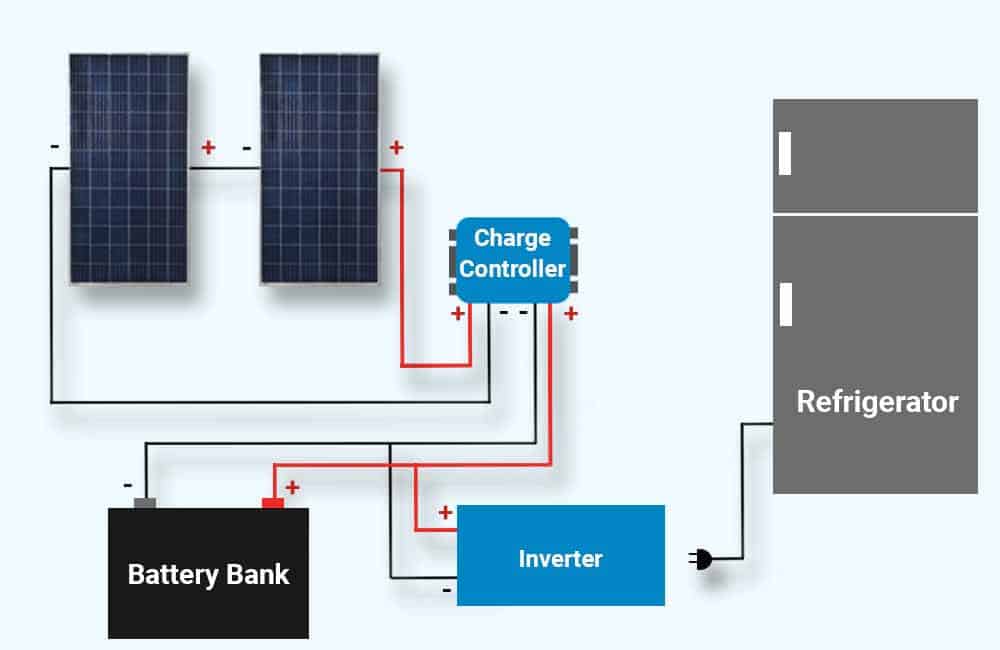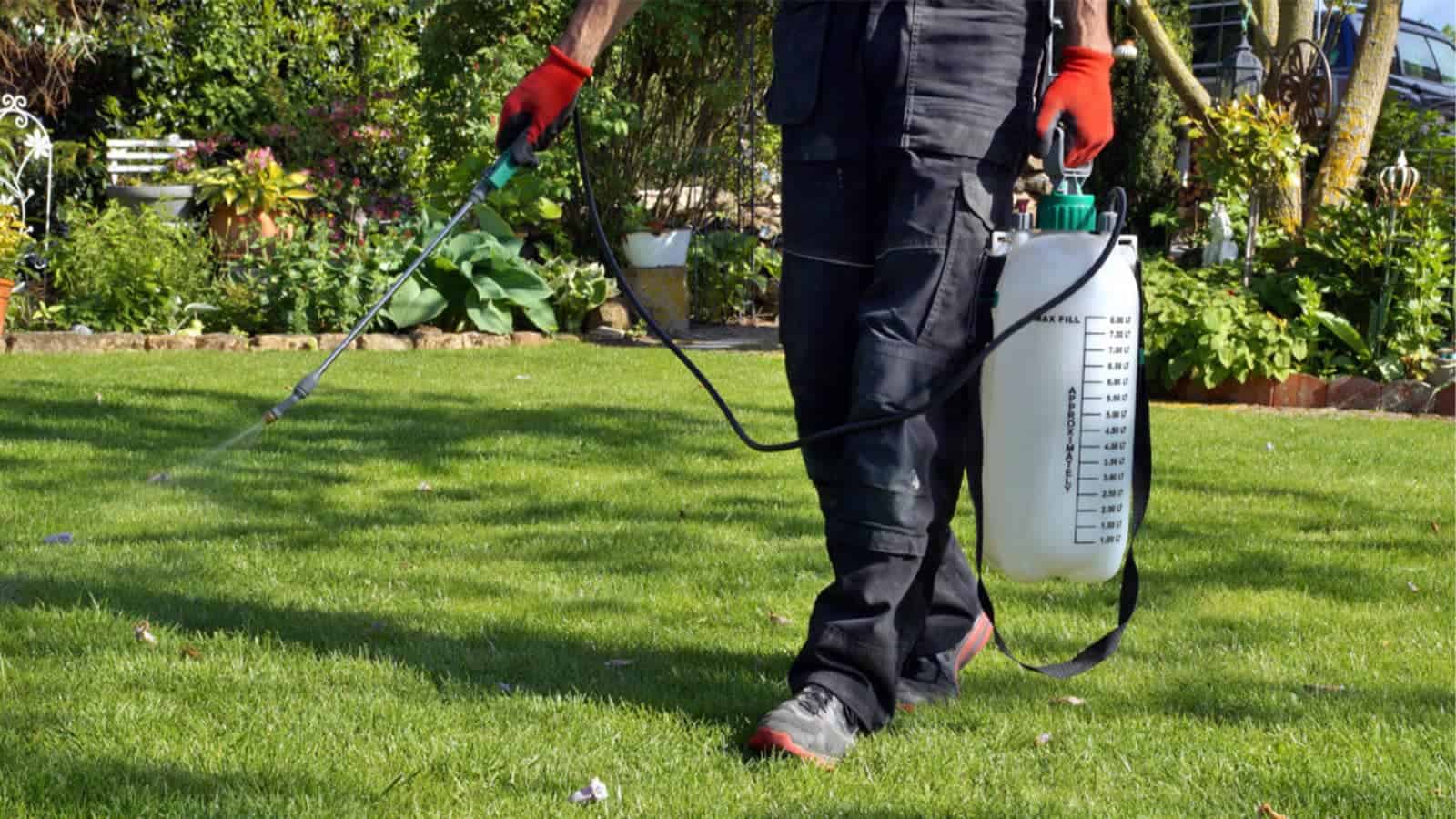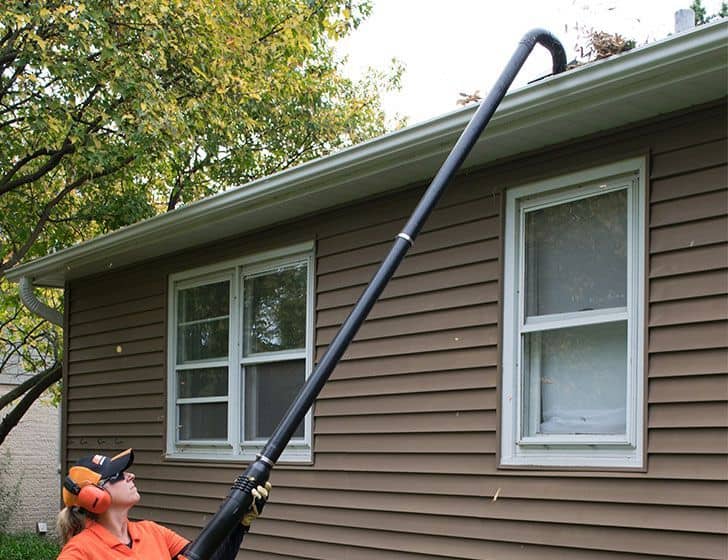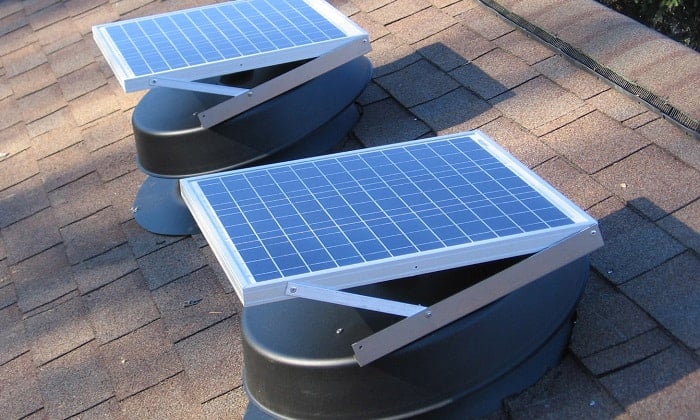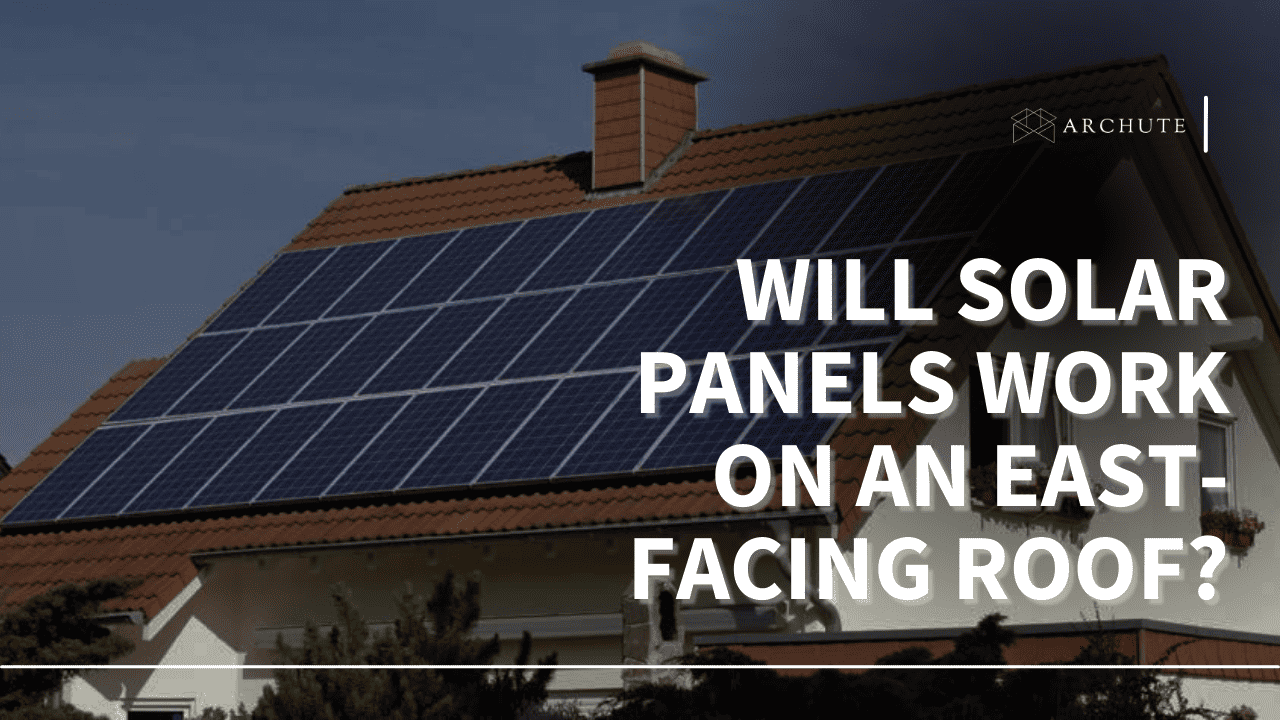Do you wish to make the switch to solar so that you can power your refrigerator alone? Now would be a good time to finally make the leap since solar power can do much more than that. While some people only use solar energy in lighting their homes and other light appliances, it is capable of powering your refrigerator and save you lots of money in a year. However, a lot has to be taken into consideration.
To begin with, knowing how much solar power is required to run a refrigerator can be answered by knowing the number of solar panels required. Well, in simple terms, one would say it could take about three to four solar panels to suffice the demand, however, one would not know which type of solar panel would best suit his or her situation. Besides, you would also need to know the power that your refrigerator employs because different refrigerator employs different amount of power.
If all of this sounds appealing, but you are unsure where to begin, then you are in the right spot. In this article, we take the time to explain why it is crucial to know how much energy your refrigerator will require before proceeding to the type of equipment required for the installation and why. Further, we will also highlight some useful tips that can assist you in receiving the maximum benefit from the solar power system.
Many of the electric products that are found in our homes today use varying measures of electrical energy. While you will have to worry little about the power usage of your smartphone, the same cannot be said for your refrigerator. This is especially important if your refrigerator is multifunctional one, as it can have various features.
To understand how much solar power it would take to power your refrigerator, you would need to determine the amount of energy your refrigerator requires, and this can be done in several ways.
First of all, this information can be obtained from an energy rating label. The energy rating is normally label on the door of most refrigerators by the manufacturers through the use of a sticker. The amount of power used by a refrigerator ranges between 200 KWh Year and well over 600 KWh Year.
More basically implies that the fridge uses more power per year meaning you will have to spend a little more cash when installing a solar power system for the fridge.

If your refrigerator doesn't have the energy rating sticker, you can still estimate the value by first finding out its power rating. It is usually measured in watts and you can find this information next to where your fridge's serial number and model are indicated.
This can also be estimated by multiplying the voltage by the amps the fridge needs. Typical values can range from 100W – 400W or more. You can then proceed to convert this to KWh depending on how long you use the fridge.
The KWh value will be important in determining how much power your refrigerator alone consumes. With this, it will then be easy to size the solar power system and know exactly how many solar panels you need and how big of a battery will be needed to power your refrigerator.
If you would want to power other appliances other than your fridge, then you should include them in your total energy consumption too.
What You Will Need for The Solar Power System
Now that you have an idea of how much power your refrigerator consumes, it becomes easy to pick the other equipment that will be vital in the solar power system. Ideally, you will need the following:
- Battery
- Inverter
- Charge controller/regulator
- Solar panels
Batteries as well as solar panels are in fact the core of a solar power system. The efficiency of each of them will be directly proportional to the efficiency of the entire system. The batteries, however, are what will store energy and enable you to use power when there is no sun, for instance at night. Inverters and charge controllers, therefore, facilitate proper flow of power within the system.
1. Battery
While conventional solar batteries can produce up to 12V of electricity, the Ah differs from one battery to another. Ampere hours are simply a measure of battery capacity in terms of how many amps a home appliance can take from the battery before it runs out of charge.
For instance, a battery that has a rating of 240Ah means that in theory it will deliver 10 amp for 24 hours. However, it is important to point out that batteries are given a 20-hour rating. This means that this same 240Ah battery can provide 12 amps per hour for 20 hours.
Calculate Appropriate Battery Size
With that in mind, you should then proceed to calculate how many watts are needed by your refrigerator in case you need it to run for the whole day. The main reason we are calculating it on a day basis is because you can easily adjust how many hours you'd need to run your fridge on solar power.
If the running watt hours of your refrigerator is say 110W/h, you can get the total watts it requires in a day by multiplying this value to 24.
Daily Total Watts Your Fridge Uses: 110W/h X 24h = 2640W
Next, we now need to know the amperage required. To do that, we simply divide the daily total watts by the voltage of the solar battery.
Total Amps Needed: 2640W / 12V = 220A
Ideally, to power our 110W/h fridge, a 12V battery rated at 250Ah would work. However, since we never want the batteries to go below 50% depth of charge, you should multiply this value by two.
Required Battery Size: 220A X 2 = 440A
Thus, in this case, a 500Ah battery would be perfect since it can deliver over 220Ah without going below 50%. Here too, you should note that the higher the amp-hours, the more expensive the battery will be.
However, depending on how you install the solar power system, you can choose to power your refrigerator with electricity from the grid during certain hours and then use solar power for the remaining hours.
If, for instance we chose to use the solar power for only 12 hours, then a 250Ah battery would be just fine since it would only use 110Ah in 12 hours before going below the 50% mark. Doing this will lower both your electricity bill and the initial cost of setting up a solar power system.
Battery Types
Another important thing that one needs to know is that there are different types of solar batteries in the market. There are three types of batteries that you can opt for, which include the flooded lead acid batteries, the sealed lead acid batteries, and the lithium batteries.
Flooded lead acid batteries are relatively more economical but need some level of maintenance and have an average service durability of 5-7 years. However, lithium batteries are relatively expensive although they are more efficient and quite durable with a lifespan of over 10 years.
2. Inverter
While batteries might be a focal point of a solar power system, unless a proper inverter is acquired, the whole system may not be efficient. As we earlier established, inverters are devices that convert DC power from the battery to usable AC power for your refrigerator. This conversion is always at the expense of electrical power, whether you are using the inverter of your choice or not. Thus, the option for an inverter with high efficiency is the best option, but there are few factors to take into consideration here as well.
Did You Checked Our Recent Reviews About Power Inverter ?
Inverter Sizing
Thus, the voltage of your inverter should be the same voltage as that of your battery. This will also apply when buying solar panels as they also require to have the same voltage as that of the battery and the inverter. When sizing an inverter, you will also need to familiarize yourself with the continuous running watts and surge watts rating.
Continuous Watts vs. Surge Watts
If for instance, you plan to power just your refrigerator with your solar power system, then it is really unnecessary to get worried about the surge watts rating or continuous watts rating of the inverter. This is because you can easily acquire one that has a rating which is slightly higher than the energy requirement of your fridge. However, when intending to power more than one device, then the two become very important.
Continuous watts rating on an inverter shows how many watts it is capable of handling at a given time. This means that an inverter with a rating of 2000-watt is only capable of providing 2KW. Surge watts, on the other hand, shows the power of the inverter in terms of watts it can deliver on a short-term basis. The surge watts of the refrigerator are normally up to 1. 5X. Therefore, you must ascertain that your inverter is capable of handling at least 1. Five times the wattage of the refrigerator is recommended.
Wire Length
The wire length between your solar panels and battery is also an important factor since long wires create more voltage drop. If for instance you are only working with high voltages but low currents then it is advisable to use shorter wires. If you still have to use longer wires then the wires also require to be thicker so that it will be able to conduct power properly.
Is Inverter Stacking Good for Refrigerators?
Some people prefer to stack up their inverters to get more power, but that will not be necessary because a proper inverter will be sufficient to run your refrigerator. Nevertheless, stacking is still a wonderful method of increasing your potential solar panel power in the future because you would simply need to purchase additional solar panels and incorporate an additional battery into the bank, if your current battery bank is not as powerful.
3. Charge Controllers
It will also be unavoidable to use a charge controller if you are planning to use solar energy to run a refrigerator. There are, however, some circumstances under which you can operate solar power systems without the need for charge controllers, such as where you are using solar panels that only generate up to 5W. This won’t be the case with refrigerators since they use far much power than any of the above devices.
Choosing the Right Charge Controller
Nevertheless, sizing a charge controller is super easy since it only requires you to be keen about two things:
- Voltage
- Current capacity
When choosing the charge controller, the voltage should be compatible with other equipment that you use in your solar power system, just like with inverters and batteries. The charge controllers are also available in three voltage ratings of 12V, 24V and 48V and this means that there is a charge controller out there for every individual.
That is why there is one great thing with charge controllers, you can get some models with voltage auto-detect feature. This will enable you to use it in almost any type of solar power system you want without necessarily having to worry about voltage. Besides, such charge controllers can also be useful if you plan to expand your solar power system in future.
Your charge controller should be capable of handling the maximum output current which will be produced by your solar panel array. In the case of a solar panel, typically the maximum current (short circuit current) is the one you should monitor. It is referred to as LSC in the spec sheet of your panel and it is advised that you should go for a charge controller that has a maximum of 1. You need to multiply by 25 the value of the LSC of your panel.
This is because solar panels could easily produce an extra percentage of power on a particular sunny day. If the charge controller you installed has a lower amp rating, it can be destroyed when the current from the solar panel is higher than the amp rating of the charge controller.
For instance, if you are using a 12V solar panel with a power rating ranging between 5W and 45W, you can use a 4-amp charge controller. But if you have a slightly bigger system that uses a 24V solar panel that generates up to 160W, then you might require a charge controller that accommodates more than 10A.
For fridges however, you may be okay with just a 4-amp and probably even a 7-amp charge controller because it will do the work without problems.
4. Solar Panels
Without solar panels, there wouldn't be any solar power for your refrigerator, and this is why they too are crucial. Earlier on, we suggested that about four solar panels could easily power your refrigerator. But this isn't always the case, especially when the discussion on batteries, inverters, and charge controllers shed light on the importance of sizing. Sometimes, even a single solar panel can still power an entire refrigerator comfortably.
Read Our Review About Flexible Solar Panels here.
There are, however, a number of things to consider when picking solar panels as well. Some of them include:
- Solar panel quality
- Solar panel size
- Hours of sunlight
Solar Panel Quality
Your refrigerator alone probably wouldn't need the best of the best when it comes to the actual solar panel, but getting a quality solar panel would work more in your favor. A good quality solar panel is one that is highly energy efficient, has a low temperature coefficient, and uses efficient solar cells.
In terms of energy efficiency, a good solar panel should be able to convert most of the light it receives into electrical energy. Such efficient solar panels come in handy during days with poor sunlight since they'll still be able to trap as much sunlight and convert it to electricity.
Good quality solar panels also experience less impact from heat. Since solar panels are meant to stay in the sun all day, they can at times overheat and this can accelerate their ageing process. However, a solar panel with a low temperature coefficient means that temperatures won't impact performance severely unless they go over a certain threshold.
Also worth noting about solar panel quality is that the type of solar cell used can make a big difference. There are usually three main types of solar cells:
- Monocrystalline – Highly efficient and has impressive heat tolerance
- Polycrystalline – Average efficiency and a great choice for residential homes
- Amorphous – Least efficient
Solar panels that use polycrystalline solar cells are a great choice for most cases and they can comfortably power your refrigerator. However, if you do have some extra cash, then it wouldn't hurt to go for the more durable monocrystalline solar panels.
Solar Panel Size
The physical size of a solar panel is paramount but you should first look at the wattage first because this is what will run your whole system. As we had seen earlier, depending with the needs of your refrigerator, you can then go ahead and select the right solar panel to use in the most efficient manner. It is crucial to note that the watt value stated on a solar panel equals the watt hours it has the capacity to generate. Therefore, a 150W solar panel will be able to produce 150Wh.
Hours of Sunlight
Apart from the size of a solar panel, other factors like the hours of sunshine in a particular region also determines the number of solar panels to be installed. In case the quality of sunlight in your area is low, you might have to put more solar panels in order to generate the minimum wattage that could be used to power the refrigerator. Thus, you should search the daily peak sunlight hours for your area. This will enable you to determine the number of the solar panels that you require now. You can do that by multiplying your refrigerator’s hourly energy requirement by the peak sunlight hours then dividing that by a panel’s wattage.
No of Solar Panels = Average Hourly Energy Requirement X Peak Sunlight Hours / Solar Panel Wattage
How to Get the Most Out of Your Solar Power Installation
Most people use their solar power systems to operate a few household appliances other than refrigerators. Regardless of the case, there are always more ways of getting the most from your solar power system in terms of efficiency, and battery lifespan. Below are some of the things you can do to get started:

Take note of power-hungry appliances
Energy requirements can be brought down by taking into consideration few appliances that draw power even when they are switched off. All modern TVs, gaming consoles, and even surround sound systems remain connected to the power source and consume electricity, even when on standby. This means that even if they are off, they can take power from your solar power system.
Of course, sizing is designed to cater for the energy needs of all devices in your home, but sometimes, turning off some of these devices when not in use can save a lot of energy. Devices that have a continuous display of some sort are usually big culprits too. Simply unplug them so that they won't consume any power in idle mode.
In a year, you could possibly save up to 10% of the amount of energy consumed in your home. This will be good for your battery as well as the other devices you incorporated in your solar power system. Therefore, with proper installation, you should be planning for your solar power system to offer its services for a long time.
Besides, you will not have to spend much money when installing the solar system because your average energy consumption will reduce once you turn off some appliances you have completely.
Be wary of your refrigerator’s power usage fluctuations
If all you wanted to power was your fridge, then you should know that the power it uses can vary depending on what you do to the refrigerator itself. Normally, sizing usually covers your fridge's operating power and surge power whenever it is connected to power.
However, certain practices can dramatically increase the power usage of your fridge. Storing hot foods in your fridge, for instance, will make it overwork so that it can maintain temperatures inside the fridge at the temperature level you set. This will then cause it to draw much more energy than was initially planned for.
If sizing was not done correctly, such a solar power installation may end up being inefficient as it won't meet your needs properly. This can be worse if you also use the same solar power setup for other devices as well because your fridge will now consume more power that was allocated for the other devices.
While sizing can indeed solve such a problem, the logical solution would be to simply use your fridge the right way. That means you shouldn't leave the doors open and you should also avoid placing hot foods inside the fridge.
Take care of your battery
In most solar systems, batteries are usually the most crucial because they supply power to your appliances even when there's no sunlight. We also briefly looked at three types of batteries that you can use for your solar power installation and realized that some require maintenance while others don't. Of course, batteries that require more maintenance will need you to keep a closer eye on them than those that don't. But that is not the only way of increasing your battery's lifespan.
If you have several batteries in your battery bank, try and reduce them. Having too many batteries at the bank increases resistance and can ultimately result in unequal charging. That is why it is preferable to have a single battery whenever possible. On the same note, ensure that you don't leave your batteries uncharged for a long time.
You should also ensure that you keep your battery or battery bank fresh and well away from high temperatures. Solar batteries’ cyclic life is also compromised when exposed to high temperatures. As such, you will not be able to get the maximum benefits of your solar power system and the batteries’ life will be dramatically shortened.
Clean your solar panels occasionally
As much as you can fix the solar panels on the roof and leave them, dust and any other debris is likely to accumulate on the top of the panel. The result? Some parts of the solar panel will be unable to perform the expected power generation and this will lead to slow charging of the battery.
It is thus a good idea to keep your solar panels clean. There's no right or wrong period for which you can do this, but if you have lots of trees around which drop their leaves on your roof, then you might need to clean more often. You should also ensure that your solar panels are away from any shade as this will have an even bigger impact on the effective power produced.
In practice, it's not always necessary to clean your solar panels if they are still delivering good enough performance. In fact, occasional rainfalls will do the cleaning for you. But you can also opt to install monitoring systems that will allow you to document the daily performance of your solar panel. Be sure to conduct most of the tests when there is no cloud cover and when there is heavy cloud cover as well and use these values as the maximum and minimum your solar panels should generate.
Conclusion
In summary, there is no one right answer as to how many solar panels would be required to power your refrigerator because there are a number of factors involved. The easiest way would be to multiply your fridge's hourly energy requirement by the peak sunlight hours then divide the value by a panel's wattage. However, you would still need to know one or two things about the type of solar panel that would work best for you.
Also, since you will need other essentials such as charge controllers, batteries, and inverters, it is recommended to understand how you can choose all these items and why you should choose one over the other. The costs of equipment will also vary in proportion to the amount of power that you want out of the system. Although it is recommended that you can install a solar power system to power only one appliance, say your refrigerator, it is better to design and install the system in such a way that it may be expanded to include other appliances at later date.

